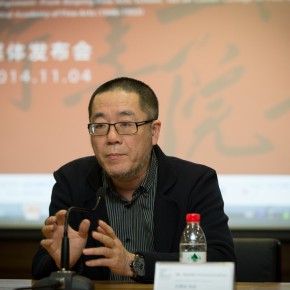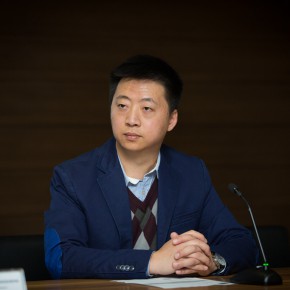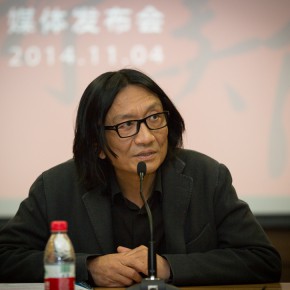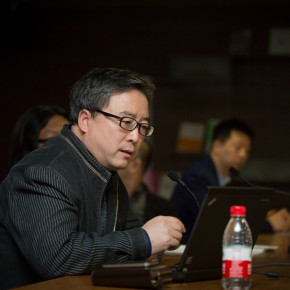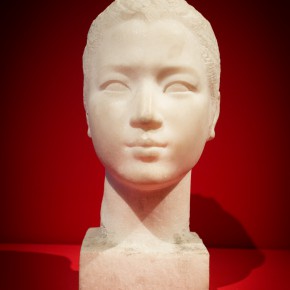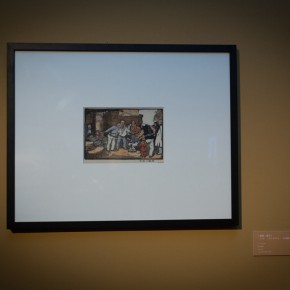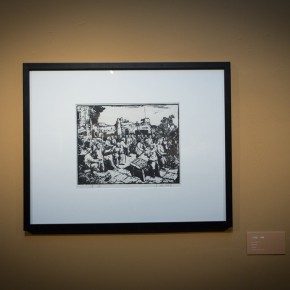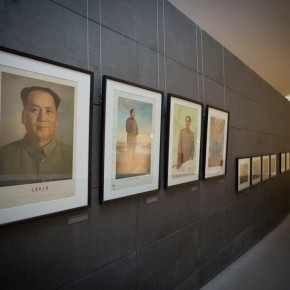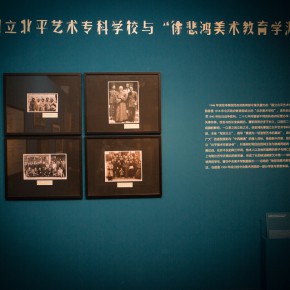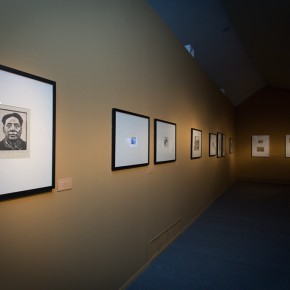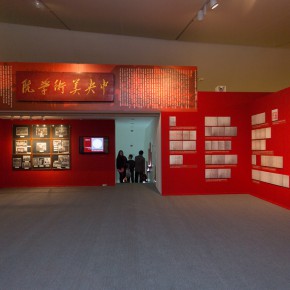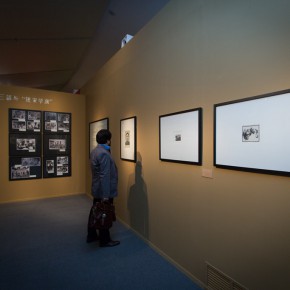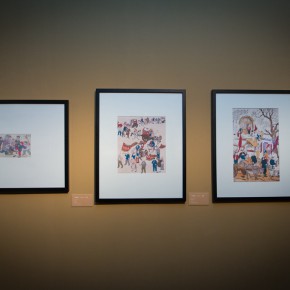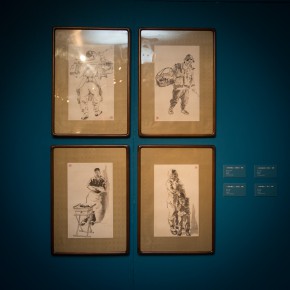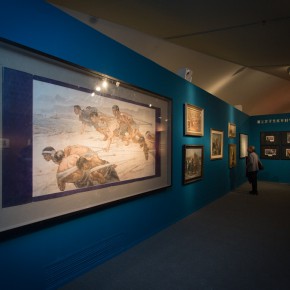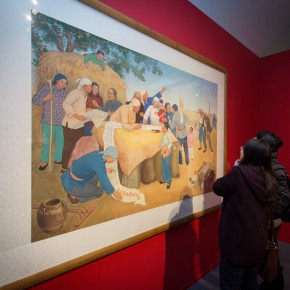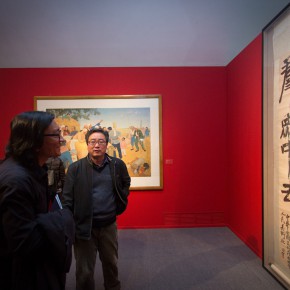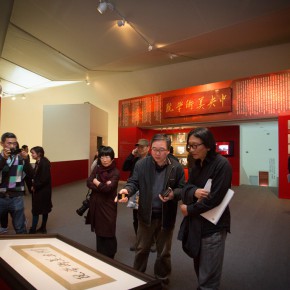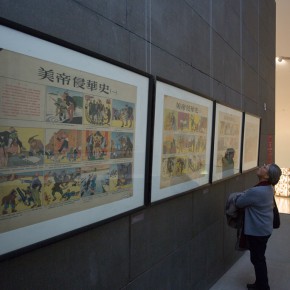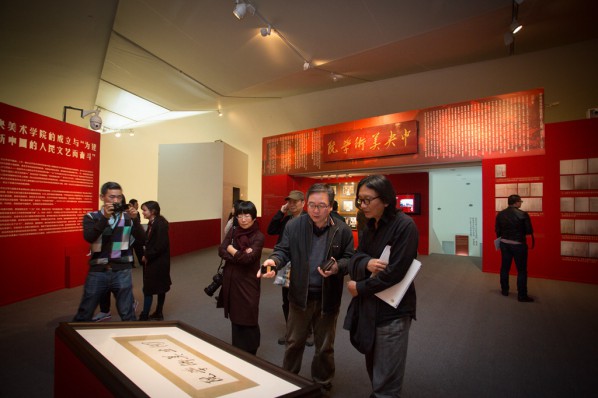
On November 4, 2014, hosted by CAFA Art Museum “Merging – From National Beiping Art School, Yan’an Luxun Academy of Literature and Art to CAFA (1946-1953)” opened at CAFAM, Wang Huangsheng acted as the Art Director of the exhibition, associate professor Cao Qinghui from the School of Humanities, CAFA acted as the curator, through CAFA’s collections of work in different periods to comb through and outline the context of inheritance of CAFA’s art education. The exhibition is also a program for the “2014 Exhibition Season of Selected Works from the Collections of National Art Museums” held by the Ministry of Culture.
CAFA Art Museum is a professional art museum which attaches great importance to the research of collections. As Su Xinping, Vice President of CAFA addressed the press conference: “A real art museum doesn’t only present exhibitions, but also focuses on combing through and researching the collections, and presenting the public with high-level academic exhibitions and publications. Based on the graduate works collected by CAFA from the 1950s to the 1990s, CAFA Art Museum planned “Long Live the Youth: The Non-age of Fine Arts in New China”, in order to think of the change of educational appearance of CAFA since new China was founded. In addition, on the basis of CAFAM’s collection the museum cooperated with the academic strength of the School of Humanities, to launch “Collection Series: Selected Works of National Beiping Art School (Chinese Painting and Oil Painting)”, combing through the history of the National Beiping Art School, and holding high-level academic discussions and lectures, to achieve a good academic influence along with social repercussions.
The “Merging” exhibition is once again an art museum narration of the evolution and development of CAFA and Chinese fine art in the 20th centre, through the exhibition of collections, literature and archives to specially comb through the process of the National Beiping Art School which merged with the 3rd Department of North China University to found CAFA, which goes through the previous “National Beiping Art School” series of exhibitions, finishing with a complete special art museum narration. Wang Huangsheng, Director of CAFA Art Museum emphasized the exhibition was not a separate exhibition behavior, but an extension and cohesion of the previous exhibitions.
Why does the exhibit choose to render the period 1946-1953? Curator Cao Qinghui said, although CAFA was born in 1918, the National Beiping Art School which was merged into CAFA, was restructured and rebuilt in 1946 after the victory in the war of resistance against the Japanese aggression, and Xu Beihong’s proposition of “Realism” teaching which connected with the National Beiping Art School at this time, so 1946 is a key moment; it was the beginning of “The First Five-Year Plan”of new China, under this background, CAFA experienced the teaching of Comic Books, New Year Painting and Posters according to the political mission of “To Popularize is First” from 1950 to 1953, and then it turned to “regularized” running of the school with professional divisions, and the beginning of the regularized construction and exploration of advanced education in fine arts. Cao Qinghui also mentioned that the 3rd Department of North China University was founded in Zhengding in 1948, some of the teachers came from Yan’an Luxun Academy of Literature and Art, and in terms of revolutionary realism tradition then “Literature and Art Should Serve the People and Socialism”, the 3rd Department of North China University and Yan’an Luxun Academy of Literature and Art both belonged to the “Yan’an School”, which is the reason why the title is positioned Yan’an Luxun Academy of Literature and Art instead of the 3rd Department of North China University.
The exhibition showcases more than 40 works of CAFAM’s collections, covering a large number of works from the National Beiping Art School, Yan’an Luxun Academy of Literature and Art, and CAFA in the early period, including not only the essence of CAFAM’s collections but also some classic works in modern art history, such as Wang Shikuo’s “Transforming the Bludger”, Deng Shu’s “Signature of Peace”, Zong Qixiang’s “In Jialing River”, Lin Gang’s “Zhao Guilan in the Heroes’ Meeting”, Li Hua’s “Figures in the Overpass”, etc., as well as the classic works by the teachers of CAFA in the early period, such as Wu Zuoren, Qi Baishi, Ye Jianyu, Dong Xiwen, Wang Linyi, and so on. In addition, the exhibition also specially showcases on 48 precious posters printed in the early years of the founding of PRC. In 1949, the National Beiping Art School was merged with the 3rd Department of North China University to found the National Academy of Fine Arts, and Chairman Mao personally inscribed the name of the school this is on show at the exhibition for the first time. The exhibition also pays attention to combing through literature, and the organizer searched extensively and showcases the original desk and chairs of CAFA at that time, so that the audience can sit on the desk to read the stories of the era.
The exhibition will continue to April 25, 2015.
Text by Zhang Wenzhi, translated by Chen Peihua and edited by Sue/CAFA ART INFO
Photo by Quan Jing/CAFA ART INFO


